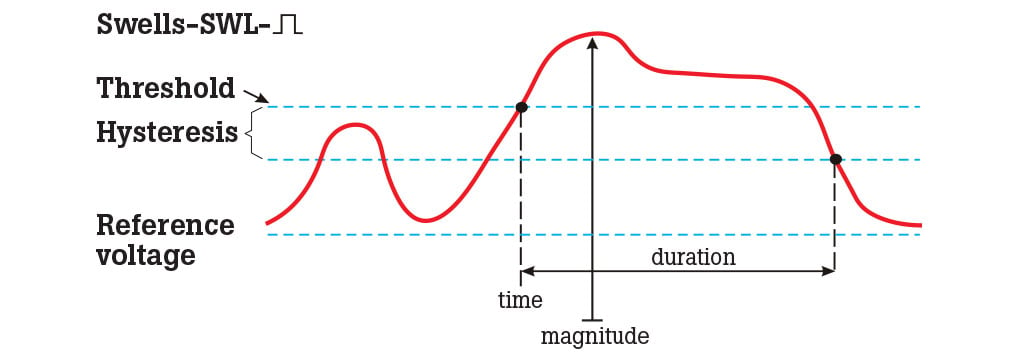Electrical and electronic equipment is rated for operation at a specific voltage. Voltage dips, swells and transients can cause trouble with industrial controls as well as equipment such as computers. Surges are generally more damaging to equipment than dips, but both can harm industrial equipment and cause outages, failures and other power quality problems.
What are voltage dips?
Voltage dips (also known as “sags”) are a reduction of voltage of 10% or more below normal or recommended usage, such as a 120-voltage outlet dropping to 90 volts. Voltage dips can have a ripple effect across multiple pieces of equipment, such as a hair dryer used in one room causing the lights in another room to dim. They can result from large motors being turned ON, to temporary short circuits in utility power lines. Undervoltage is a dip that lasts longer than a minute and can be caused by overloaded transformers or undersized conductors.
What are voltage swells?
Voltage swells are the opposite of dips and describe surges in voltage of 10% or more above normal or recommended usage. They can cause problems with machinery and overall power quality in a plant. Swells can occur when a large load (such as a large motor) is turned OFF and voltage on the power line increases for a short period of time. Overvoltage is a swell that lasts longer than a minute, sometimes caused when loads are near the beginning of a power distribution system, if taps on a transformer are set improperly, or when renewable energy sources like solar panels are connected to the network.

Characteristics of a voltage swell.
What are voltage transients?
A transient voltage is a temporary unwanted voltage in an electrical circuit that range from a few volts to several thousand volts and last micro seconds up to a few milliseconds. Transient voltages are caused by the sudden release of stored energy due to incidents such as lightning strikes, unfiltered electrical equipment, contact bounce, arcing, capacitor bank or generators being switched ON and OFF. Transient voltages differ from swells by being larger in magnitude and shorter in duration. Faulty contactors and lightning are the most common source of transients. It’s important that measurement tools designed to survive voltage transients should be certified by at least one independent testing agency.
As voltage transients can have high voltage levels it is important to use measurement tools designed to survive them, especially when measuring in a CAT IV environment where there is a higher likelihood of transients to occur. Having the tool certified by at least one interdependent testing agency is recommended. Use a power-quality meter to gather a full record of voltage dips, swells or transients. High-quality meters provide an exact timestamp, detailed event profile and high-resolution waveform capture that correlate the event to a machine state and the root cause of machine problems.
Use a power quality meter to gather a full record of voltage dips, swells or transients. An exact timestamp, detailed event profile and high-resolution waveform capture provided by higher-quality meters enables correlating the event to a machine state and finding the root cause of machine problems.